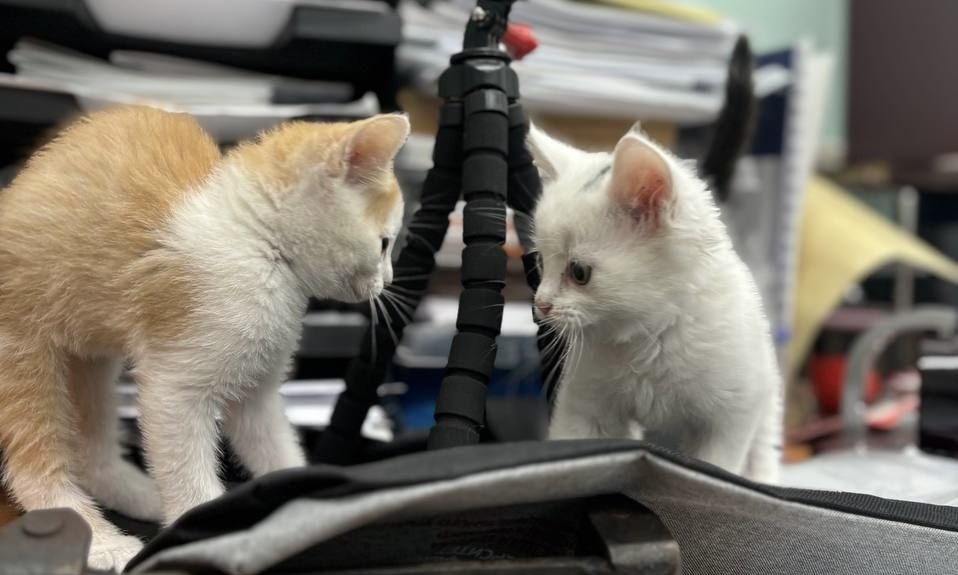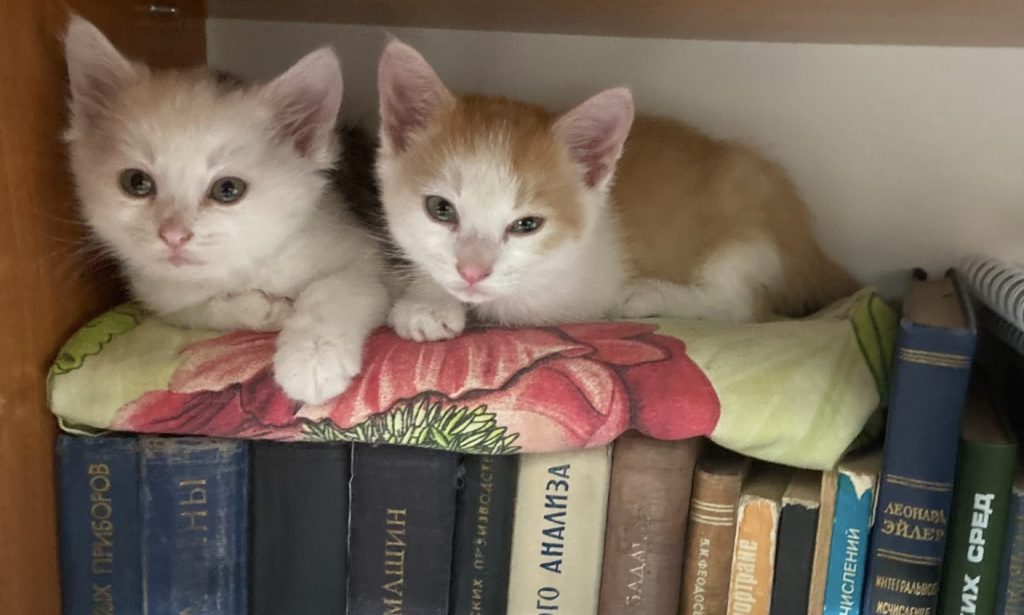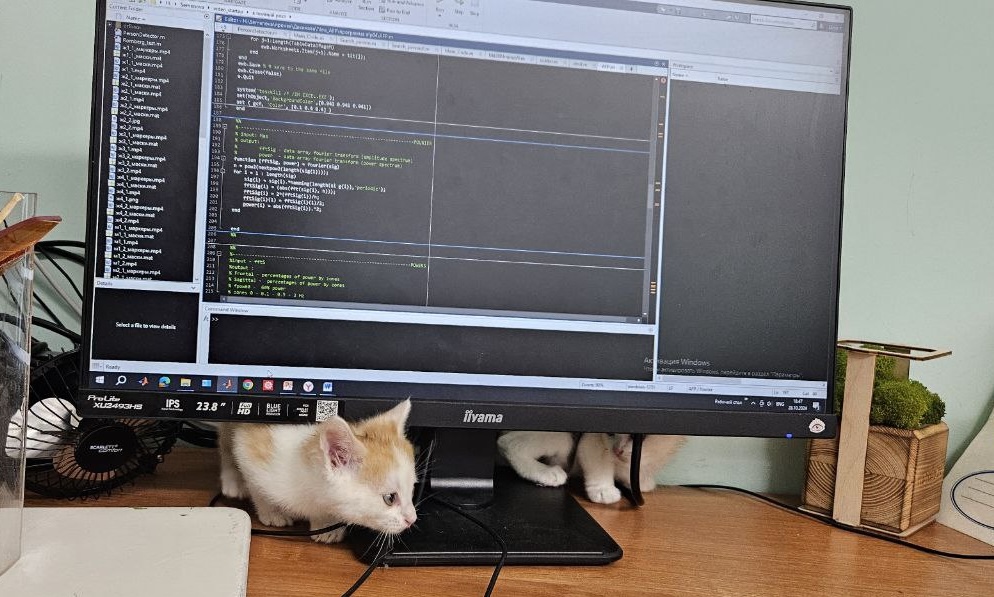Scientists nurture stray kittens to sound health and give them up for adoption




Two kittens were found in the Rector’s House of Kazan University (where the N.I. Lobachevsky Museum is located). For a week, Lobachevsky and Trubachevsky, as the kittens were named, were monitored and cared for by the staff of the Laboratory of Shell Mechanics and the Department of Computer Mathematics and Informatics.
The laboratory is located in the basement of the Rector’s House. How the kittens ended up in one of the rooms is still a mystery. One of those who sheltered and warmed the orphans was Ksenia Spiridonova, Laboratory Assistant at the Laboratory of Shell Mechanics.
“One day we heard meowing and thought nothing about it, or concluded it was a sound from the street. But when the meowing continued for several days, we decided to check and see what was going on in the neighboring room. That’s how we discovered the kittens. At that time they were about 3-4 weeks old, walking steadily and keeping on their feet. We were able to feed them,” she says.
Laboratory researchers Victoria Smirnova and Yelena Semyonova took the foundlings to a veterinary clinic, where they were checked up and vaccinated. Clean and healthy kittens returned to the university.
“For two days they did not really want to keep contact, but meowed a lot and tried to run away and hide. They didn’t eat much, only drank milk. Then the kittens saw that they were treated well, as we began to pet them little by little, let them out of the box where they were placed, and they began to run around the laboratory,” recalls the employee.
After a few days, the kittens got used to the premises and began to avidly study the world around them, paying part of their attention to books and papers. The red-colored kitten was named Lobachevsky – in honor of the great Russian mathematician, scientist and rector of Kazan University (1827-1846) Nikolai Ivanovich Lobachevsky. His white-gray brother received the name Trubachevsky – a wordplay on the last name Lobachevsky and the Russian word truba, which stands for ‘pipe’ or ‘tube’. When the youngster was found in a pipe, he resisted for a long time, not wanting to get out of there.
“At first it seemed that the redhead is particularly combative, and then Trubachevsky also began to show his character, that he is a little bit in charge here, and began, for example, to jump on the redhead. The gray one started to eat first, and only then Lobachevsky joined in. This is the hierarchy they built,” shares Spiridonova.
All employees of the laboratory took care of the ‘scientist cats’. As a rule, the one who came earlier and left work last, tried to put things in order, feed and play with the babies. Other employees also came to look at the kittens. At first the caretakers played with whatever they had in hand, such as candy wrappers, and later bought toys for the kittens.
When the question of the kittens’ further life had arisen, the scientists began to look for a new home and found one – now the kittens are in good hands in Ulyanovsk, the center of the neighboring Ulyanovsk Oblast.
“The whole laboratory are definitely cat people, so, of course, we were unwilling to give up the kittens, but everyone had their own animals already. Other live in a hostel or in rented housing, so we decided to file an ad to find owners,” says Ksenia. “We were shown a video of Trubachevsky being petted by his new owner, and I think they’re doing well.”
The new residents of the Rector’s House have rallied the team together, and, as the young scientist notes, they have become an even greater incentive to come to the job they love as soon as possible, “As it seemed to me, we began to communicate more, probably also because we constantly came to the same office under different pretexts to look at kittens. It united the team even more, we were all worried about their fate, constantly exchanging photos and discussing what they were doing. It was more pleasant to work.”

